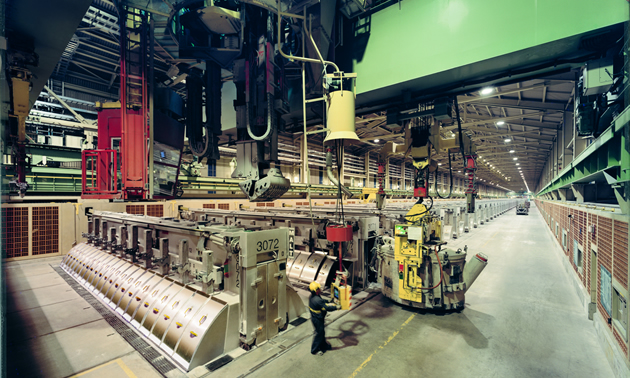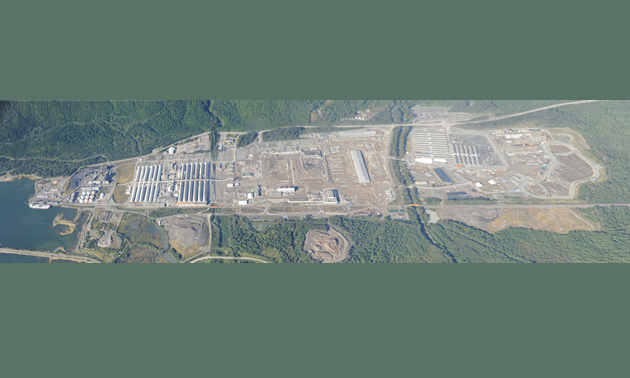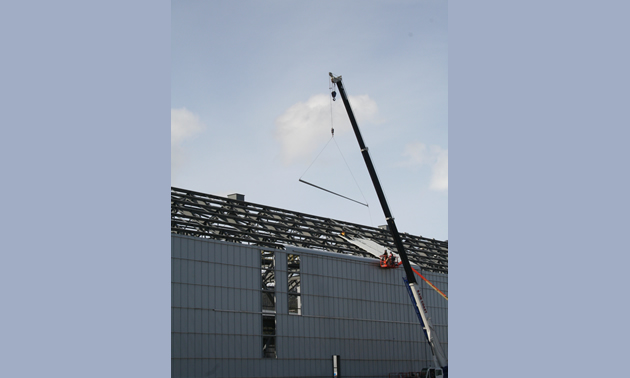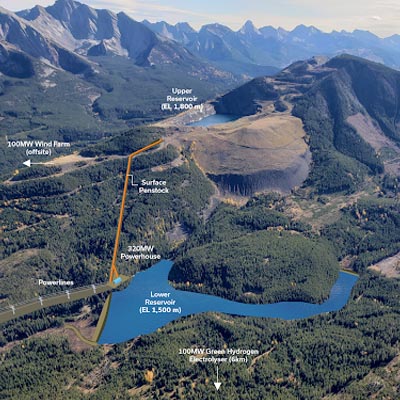Work on the Kitimat Modernization Project is going strong
The Kitimat Modernization Project is on track to be completed and achieve production by 2014
The Kitimat Modernization Project is a $3.3-billion project to expand the Kitimat Works aluminum smelter with state-of-the-art technology to achieve a leading-edge, highly efficient and world-class operation in British Columbia.
The smelter, belonging to Rio Tinto Alcan, is located in the region of Kitimat, B.C., and is the biggest project of its kind right now in all of Canada.
Michel Lamarre, project director, said he's extremely proud of the Kitimat Modernization Project; he added that work is going very well, despite some challenges.
The new smelter will see aluminum production output tonnage go up to 420,000 tonnes annually, compared to the 280,000 tonnes per year from the previous 60-year-old smelter. The new smelter will also reduce the overall environmental footprint by 50 per cent.
Forward progress
Progress has been great in 2012, with all the cleanup, demolition and relocation now done. Seventeen per cent of the construction has been completed—but the project has been going on with the challenge of keeping the existing smelter running while the new one is being built.
"It has been extremely difficult, because when you start working on a portion of smelter, you want to keep the other portion running," said Lamarre. "Sometimes, what you need to remove is used for the rest of the smelter, so you have to relocate these things but still keep the smelter running. There are 1,200 people still working and we need to keep them busy."
Lamarre said the project is now entering the greenfield stage—this means that the majority of the new smelter footprint is now unencumbered by previous structures. What is unique about the project is that it is located on a brownfield site; this is a situation that doesn't usually occur and it adds many levels of complexity. But now, any legacy contamination from running the original smelter has been removed and remediated to start again with good soil.
The human resources factor
There are currently 1,200 people working in ongoing aluminum operations at the site and an additional 720 people dedicated solely to the construction of the new smelter.
"We are very proud that a large portion of our workers are coming from the local area," said Lamarre. "We have about 720 people working here every day, with 420 of those residing in the construction village. It is very important to us to see people be able to drive from their homes and come to work. When we are at the peak of construction in 2013, we should see about 2,000 people working on the project."
Taking shape
The project is now progressing very quickly with concrete and steel. By the end of 2013, Lamarre said, people will be able to see the shape of the smelter and work will start taking place inside. A lot of mechanical, electrical and instrumentation work will begin soon and purchase orders are going very well with quick approvals.
"We are incredibly proud of this project because of the environmental legacy we will leave behind," Lamarre said. "The requirements for original smelter construction in the 1950s are definitely not the same as they are now. We are improving what was there and are creating a clean environment and a great environment for the people who will work there."
Another positive spinoff
Another legacy Lamarre said the project is leaving behind is the training of the local contractors to work at global standards.
"It's so nice to see the local contractors embracing what we want to do," said Lamarre. "When I visit them in their shops, I can see all the good ideas transposing to their own site. Other major projects, like Kitimat LNG, are taking place here and they will benefit from our very well-trained workforce."
Local employment is also something Lamarre is proud of, with 56 per cent of the project construction workers on site being local. By construction end, modernization will secure about 1,000 highly skilled, highly paid sustainable operations jobs for 35 to 40 years.
Full completion of the smelter and production are set for the second half of 2014.








